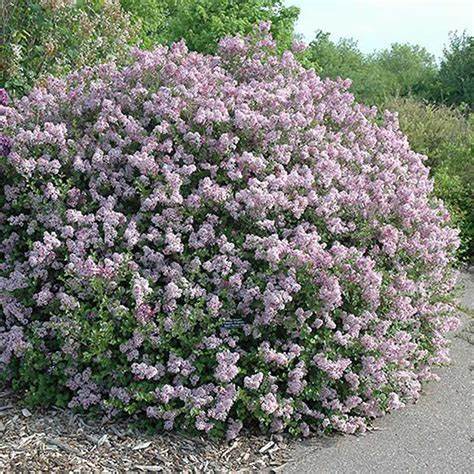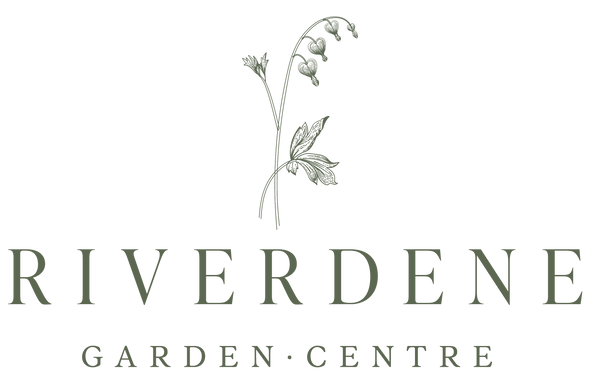Riverdene Garden Center
Dwarf Korean Lilac
Dwarf Korean Lilac
Couldn't load pickup availability
Syringa meyeri ‘Palibin’
Dwarf Korean Lilac (Syringa meyeri ‘Palibin’) is a compact, slow-growing lilac that produces abundant, fragrant, lavender-pink flowers in late spring. It is cold-hardy (Zone 3-7), low-maintenance, and highly resistant to diseases, making it an excellent choice for small gardens, borders, foundation plantings, and patio containers in Southwest Saskatchewan.
This variety reblooms lightly in summer, providing an extended lilac season. Its dense, rounded shape and small size make it ideal for urban landscapes and formal plantings.
Planting & Location
- Hardiness Zone: 3-7 (very winter-hardy, perfect for prairie climates)
- Mature Size: 4-5 feet tall, 5-7 feet wide
- Growth Rate: Slow to moderate (6-12 inches per year)
- Sunlight Needs: Full sun (6+ hours of direct sunlight for best flowering)
-
Soil Preference:
- Prefers well-drained, loamy soil.
- Tolerates clay, sandy, and slightly alkaline soils.
- Avoid soggy or compacted soil—lilacs dislike wet feet.
- Spacing: 4-6 feet apart for mass plantings, 6+ feet apart for individual shrubs.
Watering
- Young Shrubs (First 1-2 Years): Water deeply once per week to establish roots.
- Established Shrubs: Drought-tolerant; water every 2-3 weeks in dry conditions.
- Avoid Overwatering: Prefers moderate soil moisture, but avoid excessive watering.
Fertilizing
- First Year: No fertilizer needed—focus on root establishment.
-
Mature Shrubs:
- Apply a low-nitrogen, phosphorus-rich fertilizer (e.g., 5-10-10) in early spring to encourage flowering.
- Organic alternative: Compost or well-rotted manure in spring.
- Avoid excessive nitrogen, as it promotes leafy growth over blooms.
Pruning & Maintenance
- Best Time to Prune: Immediately after flowering (late spring to early summer).
-
How to Prune:
- Remove spent flowers to encourage summer reblooming.
- Trim dead, diseased, or crossing branches to maintain shape.
- Light shaping is fine, but avoid heavy pruning, as lilacs bloom on old wood.
Flowering & Fragrance
-
Bloom Time:
- Main bloom: Late spring (May-June)
- Light rebloom: Late summer (July-September)
- Flower Color: Lavender-pink clusters
- Fragrance: Strong, sweet, classic lilac scent
- Attracts: Bees, butterflies, and hummingbirds
Pest & Disease Management
Resistant to: Powdery mildew, bacterial blight, and lilac borers (common lilac diseases).
Common Pests:
-
Aphids – Can cause curled leaves and sticky honeydew.
- Solution: Spray with insecticidal soap or introduce ladybugs.
-
Spider Mites – Cause yellowing leaves in dry conditions.
- Solution: Hose off with water or use insecticidal soap.
Common Diseases:
-
Leaf Spot (Fungal or Bacterial) – Causes brown spots on foliage.
- Solution: Improve airflow and remove infected leaves.
-
Root Rot (Phytophthora) – A risk in wet soils.
- Solution: Ensure well-draining soil and avoid overwatering.
Winter Protection
- Highly winter-hardy—no special protection needed.
- Mulching: Apply 2-4 inches of mulch around the base (not touching the stems) to insulate roots.
- Deer & Rabbits: Generally resistant, but young plants may need protection.
Landscape Uses
Great for small gardens, borders, and foundation plantings
Compact and low-maintenance—ideal for urban landscapes
Highly fragrant, perfect near patios and walkways
Cold-hardy and resistant to common lilac diseases
Attracts pollinators like bees and butterflies
Additional Notes:
- Dwarf Korean Lilac is one of the best compact lilacs, offering season-long color with its summer reblooming ability.
- Lifespan: 50+ years with proper care.
- Works well as a specimen shrub, low hedge, or container plant.
Photo courtesy of Foothills Nursery
Share


